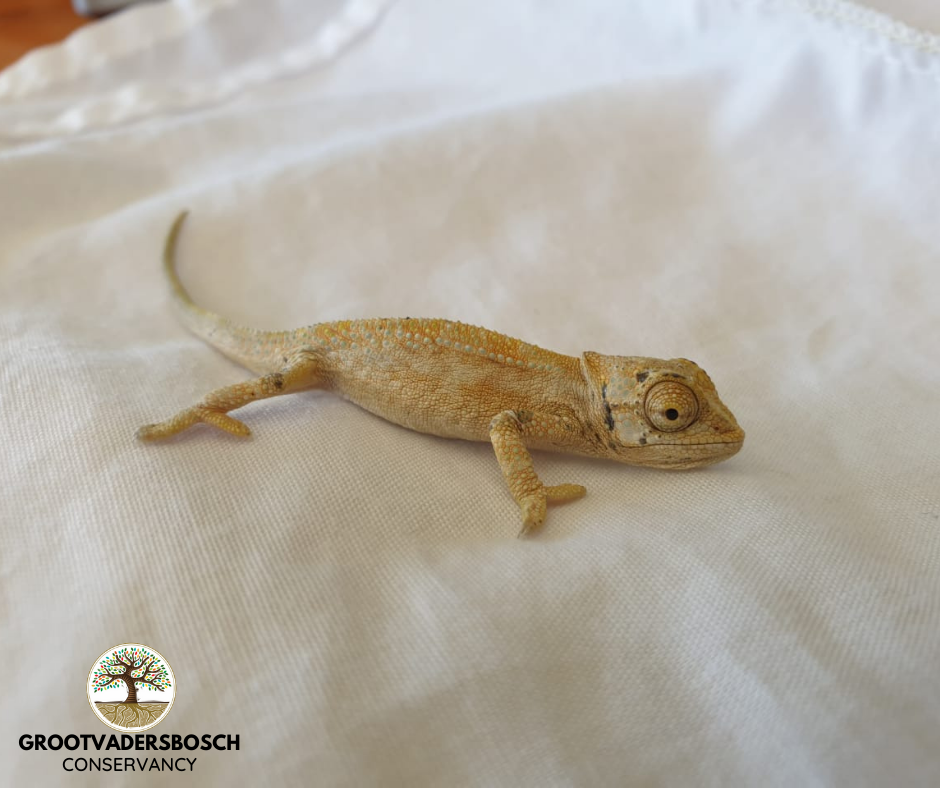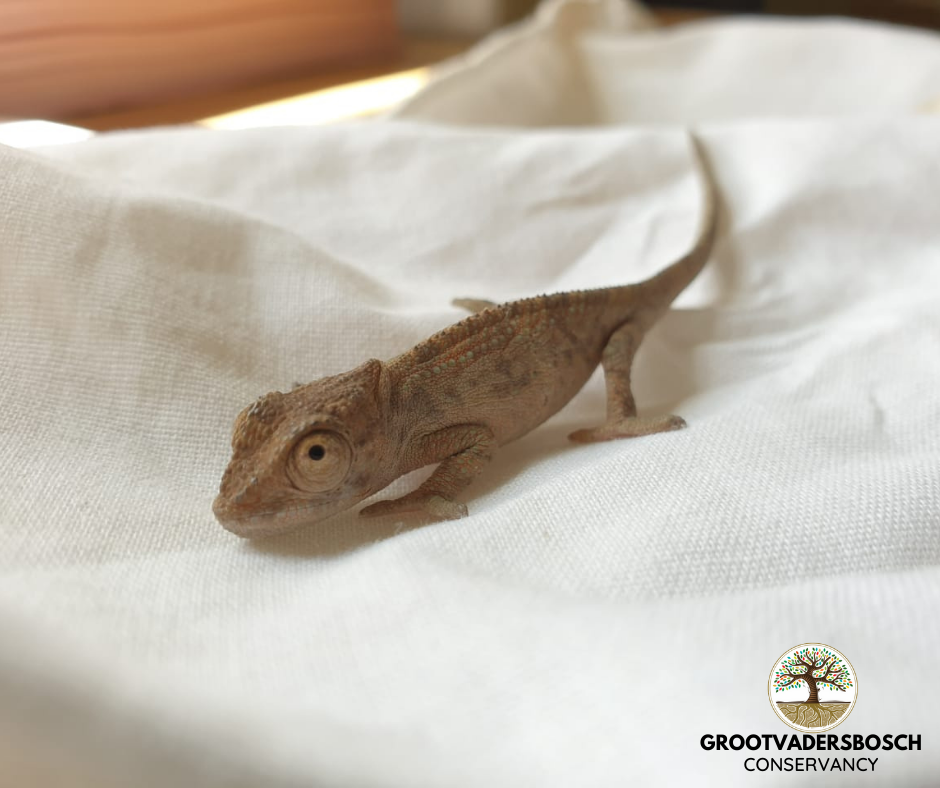|
Hidden in our indigenous forest is a recently discovered species of dwarf chameleon. At this very moment Prof. Krystal Tolley, a Research Leader at the South African National Biodiversity Institute (SANBI), is working hard to name this very elusive reptile. In the 1980s an employee from CapeNature’s scientific services found two chameleons in the Grootvadersbosch forest, they were collected and preserved at the South African Museum. After this initial sighting, no chameleons were spotted again. Previously scientists thought that the population in the Grootvadersbosch forest may be an isolated population of Knysna dwarf chameleons (Bradypodion damaranum), as they suspect that millions of years ago the Grootvadersbosch forest was connected to the Knysna forest. In around 2003, Krystal received a phone call from the manager of the Grootvadersbosch Nature Reserve informing her that they had found a dead chameleon. Krystal traveled straight here to collect it. DNA sequencing on this specimen established that the species in our forest is a separate species to the Knysna Dwarf chameleon. Krystal has worked hard trying to describe and name the Grootvadersbosch chameleon. A big issue she has encountered is not finding enough specimens. The dead specimen collected in 2003 was partly decomposed making it difficult to use. They also had no morphological data on the species. She explained that you need to have several specimens to describe a species, so you can deduct a baseline of the range of features that represent the species. You also need a range of data such as measurements, photos and back in the day, drawings. She continued visiting the forest every year 3 years to try and locate the chameleons, with no luck. Finally, two years ago Alouise and Keir Lynch from Bionerds collected samples for her. The extra samples showed for sure that our species is a separate species to the Knysna dwarf chameleon. In October, we spent the week helping her find chameleons. We collected data from their habitat and ran non invasive experiments. Currently she has a big team working to understand the adaptations of different species of dwarf chameleons in fynbos and forest biomes. The team has deduced that the fynbos biome has very thin vertical perches, with an average perch size of around 1mm in circumference. In forests, the perches are either horizontal or vertical and are much wider, ranging between 3mm and 4mm. The chameleons have adapted to walk on these perches, with forest chameleons potentially having bigger hands, their appendages might be different lengths or their gaits differ. To understand this, we carefully made the chameleons run across vertical and horizontal dowel rods of differing thickness. Her team of scientists are interested in their adaptions and have many unanswered questions that they are still investigating. Our chameleons were not initially going to be included in the study because she feared she would not find enough of them. However, since we did find some during her last visit, she decided to incorporate them into the study. Her team has found that the closest relative to the Knysna dwarf chameleon is a species of undescribed dwarf chameleon that they have nicknamed the Beardless dwarf chameleon, found in the fynbos biome adjacent to the Knysna forest. According to Krystal, the Grootvadersbosch chameleon belongs to the same group as the Knysna dwarf chameleon, though through a distant relation. Hopefully our chameleon will soon have its own official name!
0 Comments
Your comment will be posted after it is approved.
Leave a Reply. |
AuthorGVB Conservancy Staff Archives
May 2024
Categories |



 RSS Feed
RSS Feed






